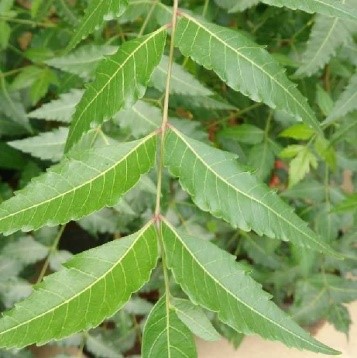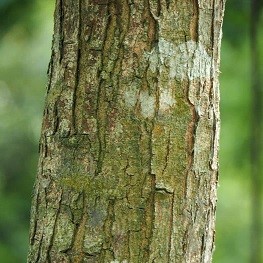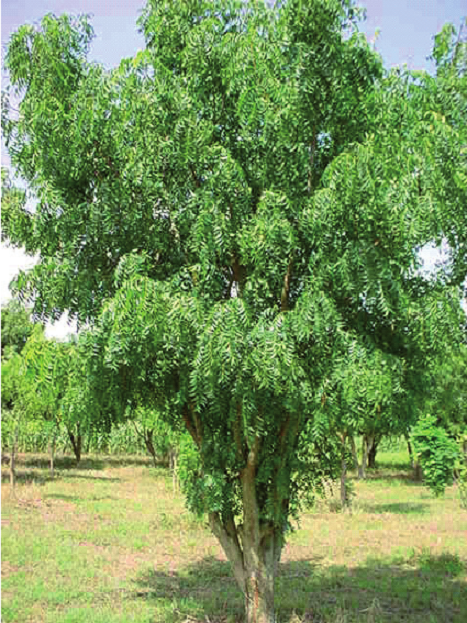Trees
Azadirachta indica (L) A. Juss.
Azadirachta indica (L) A. Juss.
Description :
A
medium to large, usually evergreen tree, 12 to 25 m tall with a diameter of
0.57 to 0.86 m. The crown is broad, dense. Spreading and rounded. The leaves
are compound, with the leaflets 2.5 to 7 cm long, and lance shaped with long
points and 4 to 7 pairs of leaflets on each leaf. Edges of the leaflets are
toothed. The bark is dark grey, lightly furrowed and broken in irregularly
shaped scales. The flowers are small, white and with the fragrance of honey,
occur in dense bunches and appear between March and April. The fruit is a
fleshy drupe containing one seed enclosed in a hard shell. Each fleshy drupe is
greenish, oblong 15 to 2 cm long. The drupe is yellow when fully ripe. The
fruiting period is June to August. It coppices easily and has few insect and
disease problems. It is reproduced both from seed and by vegetative means. Seed
has low viability and does not store well. It must be collected when it is
mature and planted as soon after collection as possible. Growth rates are high.
On rotations of 8 years yield of 5 to 18 m3/ha have been recorded.
Coppice stands seem to grow faster than seedling stands. Sapwood is greyish
white, heartwood is red fading to reddish brown with age, darkening on exposure.
Grains are uneven, interlocking, dull to somewhat lustrous having specific
gravity of 0.68 and a calorific value of 4990 kcal/kg.
Distribution :
A
native tree to India, Pakistan. Nepal. Afghanistan, Burma, China and Sri Lanka.
In Pakistan it is found in the Sindh, southern Punjab, and lower Balochistan,
has been identified as far west as Sarai Alamgir. But has not been recorded
west of the Jhelum River. A moderately tolerant tree that withstands some shade
at an early age. It grows on soils which vary from rich loams to nutrient
deficient sites which are not saline or waterlogged and where the water table
is above 18 m. It requires a precipitation zone of 300 to 1150 mm/yr and
prefers an arid, hot tropical and subtropical climate with a temperature range of
1 to 45°C. It is not frost hardy and grass competition will prevent its
establishment.
Uses :
A drought hardy tree that
grows fast even on poor sites. It has potential as a farm forestry tree
especially in those areas where frost is not a problem. The tree has achieved
world fame due to its medicinal value and should be propagated on a large scale
in Southern Punjab and Sindh. Also used in Furniture, fodder, wood carving,
medicinal (leaves as a febrifuge extract as a cure of typhoid), timber,
agriculture implements and tannin. Oil (from the seed) is marketed as a
pesticide, vermifuge, and a contraceptive.



